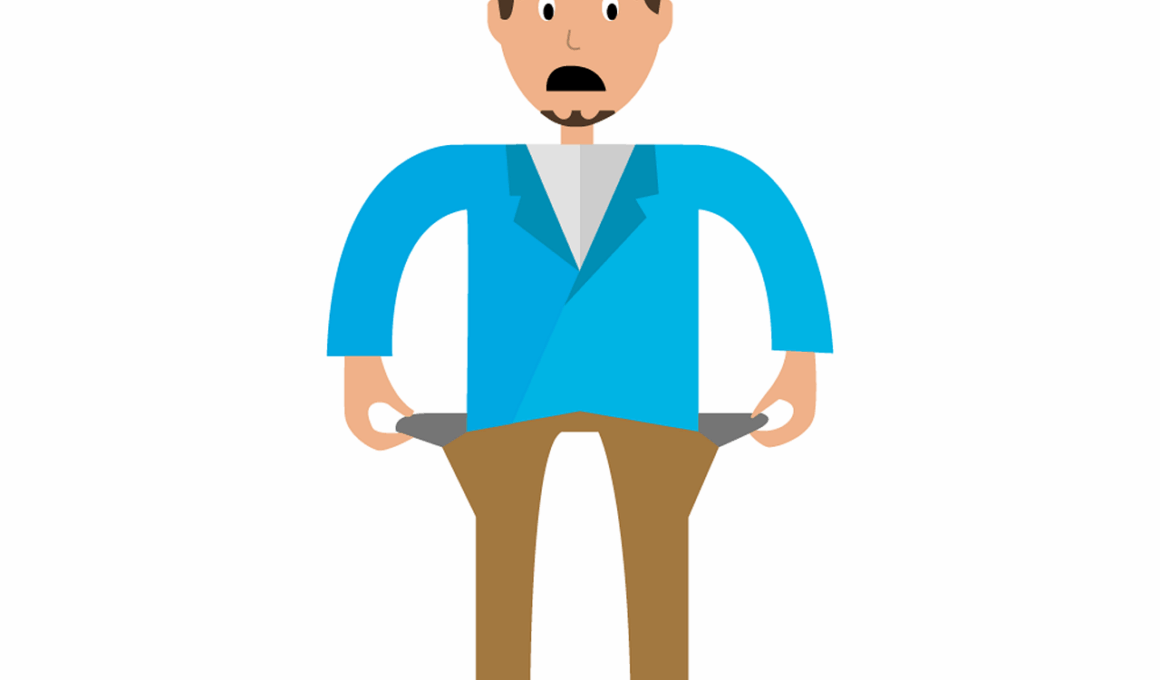Case Studies on Bankruptcy Eligibility: Real-Life Examples
Understanding bankruptcy eligibility through real-world case studies is essential for individuals considering this option. One notable case is that of John, who faced mounting debts due to unexpected medical expenses. With no income and mounting bills, he sought guidance on his eligibility for Chapter 7 bankruptcy. After consulting with a bankruptcy attorney, it was confirmed that John met the income criteria, as his debts exceeded his assets, thereby qualifying him for bankruptcy. This decision provided John with the opportunity to start fresh financially. Many learn that job loss can drastically impact their financial status, hence seeking bankruptcy protection becomes a viable route. John was relieved to find that bankruptcy could discharge most of his debts while protecting essential assets. His story serves as a reminder that seeking professional help is crucial. Another case involved Lisa, a small business owner who incurred heavy losses due to economic downturns. Lisa decided to file for Chapter 11 to restructure her business debts. This provided her with a plan to repay creditors while maintaining operations. These examples illustrate that bankruptcy is not a failure but a step towards regaining control over finances.
Another common situation arises when individuals confront overwhelming credit card debt. Mark is a prime example of this scenario. After several years of making only minimum payments, he realized that his debt had become unmanageable. Despite a stable job, high-interest rates made it impossible for him to reduce his overall debt load. Concerned about his eligibility for bankruptcy, Mark consulted with a financial advisor. The advisor explained the various options available to him, including debt management plans and bankruptcy. Ultimately, Mark chose to pursue Chapter 13 bankruptcy, which allowed him to keep his assets and reorganize his debts into more manageable monthly payments. He was amazed at how effective the plan became, as it structured payments over a three to five-year period. Mark’s story emphasizes the importance of analyzing one’s financial situation before proceeding with bankruptcy. With proper guided professional support, individuals can develop a sustainable financial plan. Additionally, seeing successful case studies can help those hesitant about bankruptcy to understand that it offers a chance for a fresh start rather than a permanent mark on their financial history. Awareness about these cases can empower others stuck in similar situations.
Impact of Medical Expenses on Bankruptcy Eligibility
A significant number of bankruptcy filings result from medical expenses, highlighting the need for awareness about eligibility. Sarah’s experience underscores this reality. After being diagnosed with a chronic illness, her medical bills escalated quickly. Despite having health insurance, co-pays and uncovered treatments drained her savings. With her medical condition affecting her ability to work, Sarah faced mounting bills and debts. She sought the advice of a bankruptcy attorney, who could illustrate her eligibility for Chapter 7 bankruptcy due to a combination of income loss and substantial medical bills that surpassed her income. This legal recourse provided Sarah with relief from her financial burdens, enabling her to clear debts that she couldn’t settle. As a result, Sarah could focus on her health without the stress of creditors pursuing her for payment. Case studies like Sarah’s shed light on the often-ignored intersection between healthcare and personal finance. They serve as a reminder that individuals must explore available protections when faced with overwhelming medical expenses. Knowledge of bankruptcy eligibility can make a profound difference in the lives of those suffering under medical debt, showing that options exist.
Another illustrative example comes from Anthony, who faced a personal crisis that led to the decision to file for bankruptcy. After losing his job unexpectedly, Anthony struggled to find new employment due to the industry downturn. His savings depleted quickly, and he soon fell behind on his mortgage payments. With his home potentially at risk, he turned to bankruptcy for help. Consulting with an attorney, he learned he was eligible for Chapter 13, which would allow him to reorganize his debts, including his mortgage. This option was ideal because it meant he could keep his home while getting back on his feet financially. Anthony’s determination to improve his situation led him to attend job training programs after he filed for bankruptcy. This case demonstrates that bankruptcy can provide a much-needed respite during challenging life situations. The path to stability can often seem daunting, but understanding eligibility criteria can empower those struggling financially. Anthony’s proactive approach following his bankruptcy showcases the resilience needed to rebuild. His journey illustrates that bankruptcy can be a transformative process, enabling individuals to reclaim their lives and financial health.
Business Bankruptcy and Eligibility Considerations
Business owners facing financial distress often find the need to evaluate their eligibility for bankruptcy options. Case studies of small businesses provide valuable insight into this process. Consider the story of David, a restaurant owner who fell victim to increased competition and rising costs. His revenue dipped sharply, pushing him towards bankruptcy. David explored Chapter 11 bankruptcy as a means to restructure his debts while keeping his business operational. This option allowed him to negotiate with creditors and develop a feasible payment plan, which ultimately helped him regain a foothold in the market. Owing to his unique situation, he managed to carve out a plan that sustained jobs and retained customer loyalty. David’s experience reveals the critical need for business owners to understand the available bankruptcy types and eligibility criteria tailored for them. Many assume that filing for business bankruptcy means total failure; however, David’s outcome illustrates that it can foster renewal and recovery. The right legal guidance can navigate the complexities of business bankruptcy, allowing entrepreneurs to emerge stronger. His case serves as a reminder that bankruptcy is not merely an end but sometimes a new beginning.
Housing costs often lead many individuals to consider their bankruptcy status, especially in an increasingly volatile market. Jessica, a tenant who experienced unexpected rent increases due to gentrification, found herself struggling. Initially unaware of her eligibility, she visited a financial counselor. During this process, she learned about the potential for personal bankruptcy protection. Jessica faced several debt collectors demanding payment for late utilities, prompting her to explore Chapter 7 or Chapter 13 bankruptcy. After determining her total income and essential expenses, she successfully qualified for Chapter 7. The discharging of most unsecured debts alleviated her distress about housing instability, providing her an opportunity to successfully plan her financial future. Jessica’s scenario effectively demonstrates how life events can shape one’s eligibility for bankruptcy. It emphasizes that the nuances of financial and housing obligations can greatly influence decisions. This case highlights the relevance of favorable legal frameworks in protecting vulnerable populations. By understanding bankruptcy eligibility, individuals can better navigate the pressures of affordability, ensuring they have opportunities to stabilize their financial conditions and protect their living situations.
Final Thoughts on Navigating Bankruptcy Eligibility
In summary, the case studies discussed illuminate the diverse factors influencing bankruptcy eligibility decisions. Each unique story reflects personal challenges that lead individuals to seek relief through legal avenues like bankruptcy. Whether it’s due to unforeseen medical costs, job losses, or business failures, individuals need to understand their options. Education about the bankruptcy process and eligibility criteria allows individuals to approach their financial realities with more confidence. By analyzing such cases, we can better appreciate the stigma often associated with bankruptcy. There’s a misconception that bankruptcy equates to financial failure, yet each case often illustrates resilience and hope. Evaluating these historical narratives empowers others to see the potential for recovery through informed consideration. For prospective filers, connecting with experienced professionals can clarify available paths and legal implications. Seeking guidance is crucial for understanding personal eligibility, helping to chart courses amidst overwhelming financial obligations. With awareness comes empowerment, allowing individuals to envision new beginnings. Ultimately, the stories highlight that bankruptcy is a vital tool for many, not just a last resort but also a route to improved financial health.
Marrying educational resources with clear case studies fosters a comprehensive understanding of bankruptcy eligibility. Future articles and discussions on this topic can enhance wider perspectives, helping to break down barriers linked to financial distress. It is important that individuals share their experiences with bankruptcy actively to create a supportive community for those struggling with similar issues. Through transparency, we foster understanding, and this can pave the way for a more financially literate society that recognizes the complexities of personal finance. Advocacy can further support those exploring bankruptcy options by providing community resources and legal assistance. Expanding on these narratives through workshops or community outreach can benefit many who feel isolated by their financial situations. Learning from previous case studies generates hope and options for those currently facing difficulty. Whether it’s through personal experiences or professional insights, sharing knowledge can illuminate pathways. Engaging broader public participation in discussions about bankruptcy can also shift perceptions and promote healthier attitudes towards financial recovery. The journey through bankruptcy eligibility is often personal; however, it shapes collective experiences that build a more informed and supportive community around finances.


